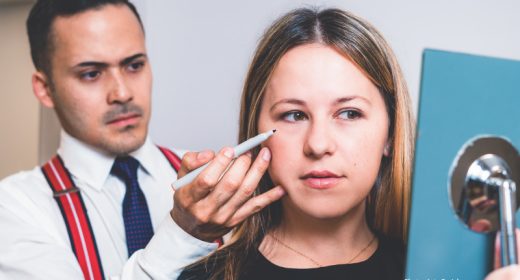
Photo Tips – Composition is King
- JUL 04, 2017Warning: count(): Parameter must be an array or an object that implements Countable in /home/howlermag/public_html/old/wp-content/themes/new-paper/includes/general.php on line 193

Your Lead Paragrpah goes here
[vc_row full_width=”full_width”][vc_column][vc_column_text]Reflections in a blackwater canal lead the viewer’s eye to a spectacled caiman in Costa Rica’s Tortuguero National Park.[/vc_column_text][vc_column_text]Composition is a key part of many visual arts disciplines, from painting to cinematography to photography. Photos that have great composition take you beyond the snapshot and will always catch a viewer’s eye. Even if you’re using your phone to take pictures, you can think like an artist![/vc_column_text][/vc_column][/vc_row][vc_row full_width=”full_width”][vc_column width=”1/2″][vc_column_text]What makes a good composition? Every shooting scenario is different but a general rule is that a good composition will lead the viewer’s eye through the frame, putting the attention on your subject. Some starting guidelines include placing your subject off-center and looking for leading lines.[/vc_column_text][/vc_column][vc_column width=”1/2″][vc_gallery type=”image_grid” images=”3193″ img_size=”full”][vc_column_text]Striated rocks serve as leading lines in this sunset image of a beautiful beach near Dominical in
Costa Rica.[/vc_column_text][/vc_column][/vc_row][vc_row full_width=”full_width”][vc_column width=”1/2″][vc_gallery type=”image_grid” images=”3191″ img_size=”full”][vc_column_text]In this photo taken in northern Costa Rica, I placed the eye of this wild keel-billed toucan in the upper left third of the frame. For the Western brain, images reading from left to right are generally more effective.[/vc_column_text][/vc_column][vc_column width=”1/2″][vc_column_text]When placing your subject off-center, the rule of thirds is a nice starting point. The rule of thirds is derived loosely from 13th century mathematician Leonardo Fibonacci’s explorations into proportions related to symmetry in nature. The general principle was applied to art by Leonardo Da Vinci and many other artists. To use the rule of thirds, frame your shot so that your subject is toward the top or bottom and to the left or right. Giving your subject space to look into the frame is normally a good idea.[/vc_column_text][/vc_column][/vc_row][vc_row full_width=”full_width”][vc_column width=”1/2″][vc_column_text]Leading lines can take the form of physical structures (lines on a highway, tree branches, rocks) or visual phenomena (reflections in water, moving surf, or clouds). A great way to begin to see leading lines is to forget about your subject. Instead, try to visualize a scene in terms of lines and shapes and then look for a pleasing abstract arrangement.[/vc_column_text][/vc_column][vc_column width=”1/2″][vc_gallery type=”image_grid” images=”3195″ img_size=”full”][vc_column_text]This portrait of two wild strawberry poison frogs in northern Costa Rica uses both the rule of thirds and leading lines.[/vc_column_text][/vc_column][/vc_row][vc_row full_width=”full_width”][vc_column][vc_column_text]Next time you’re out photographing, unleash your inner Da Vinci and make some great photos![/vc_column_text][/vc_column][/vc_row]









